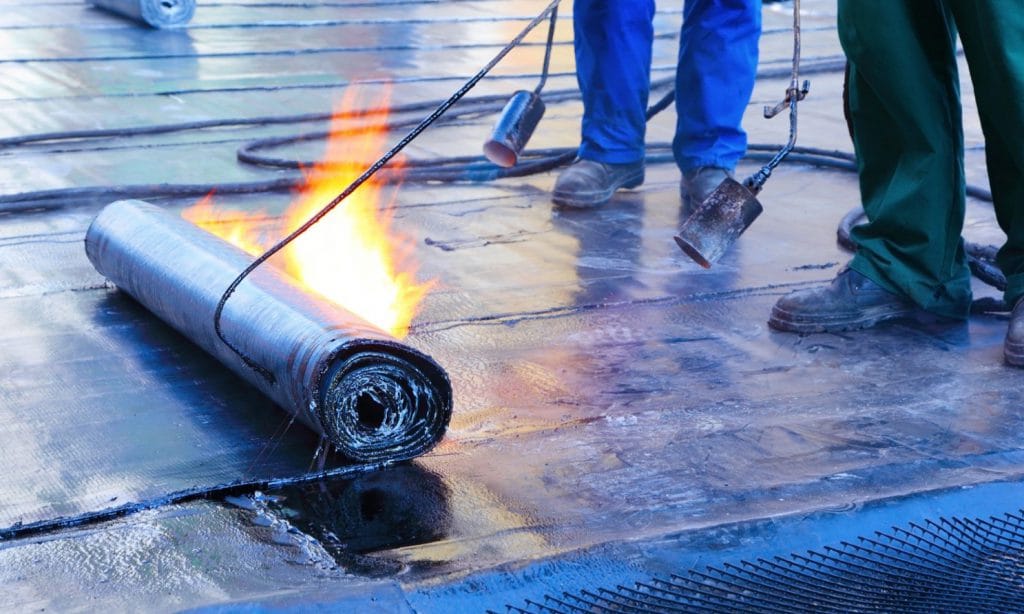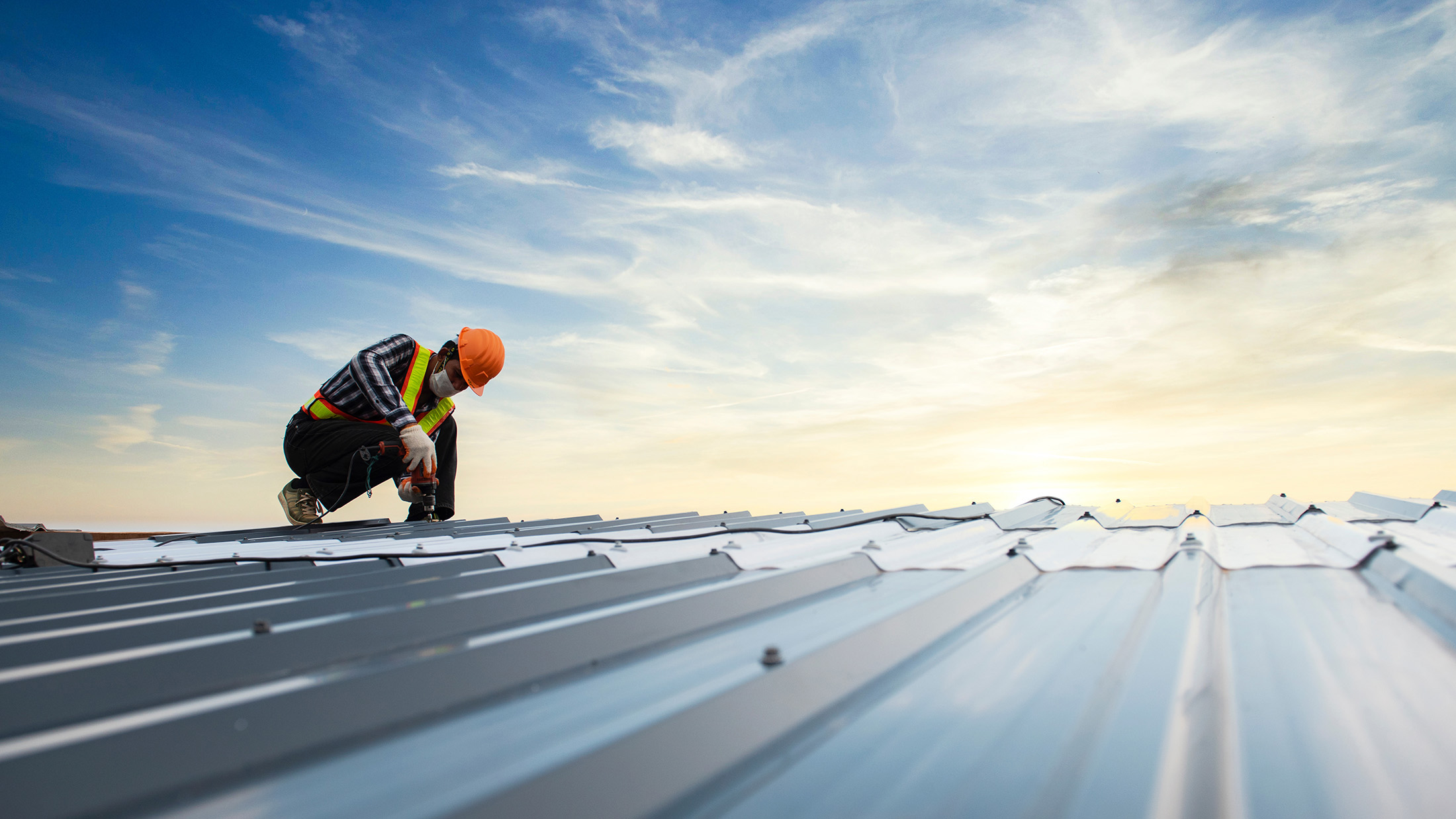Why Waterproofing Is Critical for Durable Frameworks: an Extensive Evaluation
Waterproofing plays a necessary function in the long life of structures. It works as an obstacle against dampness, which can cause significant concerns like mold and mildew and wear and tear. Recognizing the different waterproofing methods and their effects is important for homeowner. The consequences of disregarding this aspect can be extreme. Exploring these aspects reveals not just the need of waterproofing, however additionally its more comprehensive effect on property value and safety and security.
Understanding Waterproofing: Interpretation and Importance
Waterproofing offers as an essential barrier versus dampness intrusion, protecting frameworks from potential damage. It includes numerous methods and materials created to stop water penetration into buildings, making certain longevity and performance. The value of waterproofing can not be overemphasized, as it shields against a variety of problems, including mold and mildew growth, deterioration of products, and structural weakening.Effective waterproofing options can include membrane layers, finishes, and sealers, each tailored to certain environments and architectural styles. By developing a safety layer, these options help keep a completely dry inside, which is crucial for the health and wellness of residents and the preservation of building value.Moreover, spending in waterproofing at the construction stage is considerably a lot more cost-efficient than attending to water-related problems after they develop. Recognizing the principles of waterproofing is critical for architects, builders, and residential property proprietors intending for resilient, resilient frameworks that endure the examination of time and ecological obstacles.

The Influence of Water Damages on Architectural Stability
Water damage postures significant threats to architectural honesty, largely via the growth of mold and mildew. These organisms not just compromise interior air quality however likewise lead to material destruction over time. Additionally, prolonged direct exposure to wetness can damage structural parts, boosting the possibility of collapse or failing.
Mold and Mildew Development
Wetness intrusion presents a significant danger to the architectural integrity of buildings, bring about the proliferation of mold and mildew and mold. These fungi thrive in moist atmospheres, frequently settling in concealed locations such as wall surface tooth cavities, under floor covering, and in ceilings. Their development not only produces unsightly discolorations and unpleasant odors yet also adds to a decline in indoor air high quality, posing health threats to occupants. Mold and mildew can jeopardize materials like wood and drywall, bring about further wetness retention and producing a cycle of damage. Early detection and remediation are vital to avoid substantial growth, highlighting the need of efficient waterproofing actions. Attending to wetness problems promptly can secure both the health and wellness of inhabitants and the durability of the framework.
Structural Weakening Risks
Uncontrolled dampness intrusion can result in severe architectural weakening, threatening the stability of structures. Water damage commonly influences fundamental elements, such as beam of lights, columns, and walls, resulting in jeopardized load-bearing capability. Long term exposure to wetness can cause materials like timber to rot and steel to wear away, weakening their structural residential properties. This damage might result in cracks, bowing, and even tragic failings if left unaddressed. French drain installation Omaha. Furthermore, water seepage can undermine the dirt beneath structures, triggering settling or moving that further worsens architectural dangers. Because of this, executing effective waterproofing solutions is important in preserving a structure's architectural integrity, avoiding pricey repair services, and guaranteeing security for passengers. Proper maintenance and aggressive procedures are essential in mitigating these considerable dangers related to water damage
Kinds Of Waterproofing Techniques and Materials
Waterproofing techniques and materials play a critical duty in shielding structures from water damage. Secret techniques consist of membrane layer waterproofing, which provides a physical obstacle; liquid waterproofing services that form a smooth layer; and cementitious waterproofing choices known for their sturdiness and ease of application. Recognizing these different approaches is important for picking one of the most ideal approach for particular building and construction needs.
Membrane Layer Waterproofing Strategies
Membrane waterproofing techniques are crucial for protecting frameworks from the harmful results of water infiltration. These methods involve the application of water resistant membranes that develop an obstacle against dampness. Both main types of membrane layer systems are sheet membrane layers and liquid-applied membrane layers. Sheet membranes, generally made from materials such as rubberized asphalt or polycarbonate, are prefabricated and can be rolled out and complied with surfaces. In contrast, liquid-applied membranes are used as a fluid and cure to form a smooth layer. Both types provide adaptability and resilience, accommodating various applications, consisting of roof coverings, basements, and structures. Appropriate installation and maintenance of these membrane layers ensure long-lasting protection, enhancing the life-span and integrity of the structures they protect.
Fluid Waterproofing Solutions
Liquid waterproofing options stand for a functional alternative to conventional membrane systems. These solutions usually entail the application of liquid coatings that cure to form a smooth, resilient barrier against water seepage. Numerous sorts of liquid waterproofing materials are available, including polyurethane, bitumen, and acrylic-based formulas. Each type uses distinct properties, such as flexibility, bond, and UV resistance, making them appropriate for diverse applications. The application process usually entails splashing or rolling the liquid onto surfaces, allowing for insurance coverage of complicated shapes and details, which decreases possible weak factors. Liquid waterproofing services are particularly beneficial for areas with motion, such as joints and cracks, as they can suit structural changes without jeopardizing integrity, making sure lasting security for frameworks.
Cementitious Waterproofing Options
Numerous cementitious read what he said waterproofing options are available, offering effective options for different building requirements. These systems typically include a mix of cement, sand, and ingredients, making waterproof brick sealer them suitable for both interior and exterior applications. Amongst the prominent selections are crystalline waterproofing items, which respond with wetness to form a water-proof barrier within the concrete matrix. Furthermore, adaptable cementitious finishings give improved elasticity, accommodating minor architectural movements without compromising the waterproofing honesty. It is likewise common to use cementitious sealers for joints and fractures, guaranteeing extensive protection versus water seepage. Overall, cementitious waterproofing choices are valued for their durability, ease of application, and compatibility with various substrates, making them a favored choice in modern-day building techniques.
Long-Term Expense Financial Savings With Reliable Waterproofing
Buying efficient waterproofing solutions can significantly lower lasting costs for building owners and designers. By stopping water breach, these remedies mitigate damage to architectural components, reducing the need for costly repair services and upkeep with time. Waterproofing additionally shields indoor coatings and home furnishings, reducing substitute prices and boosting the total life-span of the property.Moreover, reliable waterproofing can bring about power financial savings by boosting insulation and minimizing humidity-related problems. This leads to reduced home heating and cooling expenses, contributing to a more lasting economic design for property management.Additionally, the implementation of waterproofing actions can boost property worth by making sure a dry, safe, and sturdy environment. While the preliminary investment in waterproofing might seem significant, the long-lasting financial advantages far exceed the in advance expenses, making it a sensible decision for anyone entailed in construction or property administration.

The Duty of Waterproofing in Structure Codes and Rules
Waterproofing plays a substantial duty in structure codes and laws, mirroring its relevance in modern-day building and construction techniques. These codes are made to assure safety and security, longevity, and sustainability in structures, stressing the requirement for efficient waterproofing steps. Various national and neighborhood structure codes detail certain requirements for waterproofing materials and techniques, specifically in locations susceptible to water intrusion, such as cellars and foundations.Compliance with these laws not only safeguards structures from moisture-related damages however also safeguards public wellness by protecting against mold growth and architectural instability. Examiners typically assess waterproofing components throughout the construction procedure to ensure adherence to established criteria. As environment change enhances the regularity of extreme climate events, the role of waterproofing in building regulations is expected to advance, potentially resulting in stricter guidelines. In general, the assimilation of waterproofing in regulative structures highlights its critical function in achieving resilient, resilient frameworks.
Case Studies: Effective Waterproofing Solutions
Successful waterproofing remedies have been carried out across different projects, showcasing ingenious strategies that enhance architectural honesty and durability. One significant example is the improvement of the historic Smith Tower in Seattle, where innovative membrane systems were utilized to protect the structure from water intrusion. This approach not only maintained the building's visual but additionally expanded its lifespan.In one more situation, a basement waterproofing companies near me huge commercial building in Miami used crystalline waterproofing innovation, which responds with dampness to form a barrier versus water. This remedy proved efficient versus the city's high moisture and hefty rainfall.Additionally, a bridge in San Francisco went through a comprehensive waterproofing treatment utilizing epoxy coatings, which significantly minimized upkeep prices and boosted resilience. These situation research studies highlight the performance of tailored waterproofing methods in varied settings, emphasizing the relevance of picking ideal approaches to address specific challenges and guarantee the long life of structures.
Best Practices for Implementing Waterproofing Techniques
Executing effective waterproofing strategies requires careful preparation and adherence to ideal techniques - Water Solutions. It is crucial to carry out a comprehensive website evaluation to identify possible locations of water access. This evaluation informs the option of ideal materials and techniques customized to certain environmental conditions. Making use of premium, resilient waterproofing membrane layers can substantially improve protection versus moisture.Additionally, proper installment methods are essential; guaranteeing that surface areas are clean and devoid of pollutants advertises suitable adhesion. Regular upkeep checks should be arranged to identify any type of signs of wear or damage, enabling timely repairs.Moreover, incorporating drainage systems can successfully manage water overflow, stopping accumulation around structures. Enlightening all personnel included in construction regarding waterproofing needs further assurances uniformity and adherence to best methods. Ultimately, a positive approach to waterproofing can substantially extend the life expectancy of frameworks and reduce long-lasting upkeep prices
Frequently Asked Concerns
Exactly How Does Waterproofing Affect Power Performance in Buildings?
Waterproofing substantially enhances energy efficiency in buildings by stopping dampness breach. This reduces the need for heating and cooling, preserves regular interior temperatures, and eventually decreases power intake, adding to long-term sustainability and cost savings.
Can Waterproofing Be Applied to Existing Structures?
Waterproofing can certainly be applied to existing structures. Different techniques, such as membranes, coatings, and sealants, enable homeowner to boost defense versus wetness, consequently lengthening the framework's stability and minimizing prospective damages over time.
What Are the Signs of Inadequate Waterproofing?
Indications of inadequate waterproofing include water stains on wall surfaces, mold and mildew development, peeling off paint, stuffy odors, and dampness in cellars - Sump pump discharge drainage Omaha. These signs suggest possible architectural damage and the demand for instant attention to avoid more degeneration
How Often Should Waterproofing Be Evaluated or Maintained?
Waterproofing needs to be checked at least annually, especially in regions with hefty rainfall or ever-changing temperatures. Normal maintenance warranties early discovery of issues, promoting structural honesty and prolonging the life expectancy of the structure.
Exist Eco-Friendly Waterproofing Options Available?
Green waterproofing choices are increasingly readily available, utilizing sustainable products such as bio-based polymers and all-natural sealants. These options not only shield structures yet also lessen environmental influence, appealing to ecologically aware building contractors and homeowner.